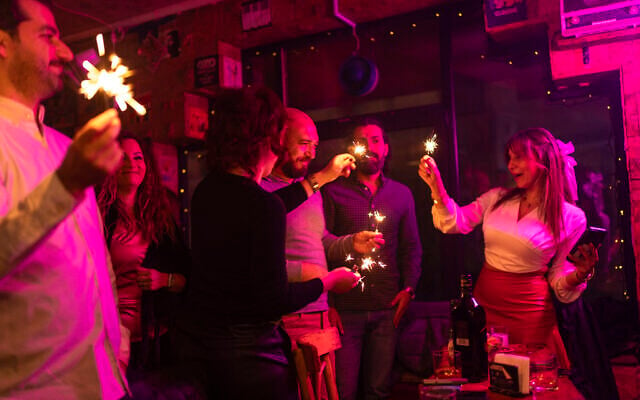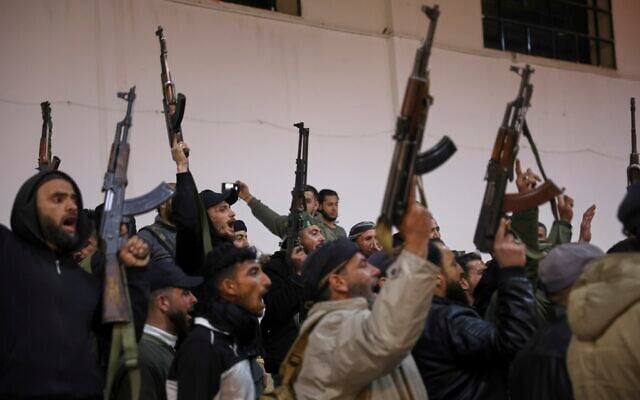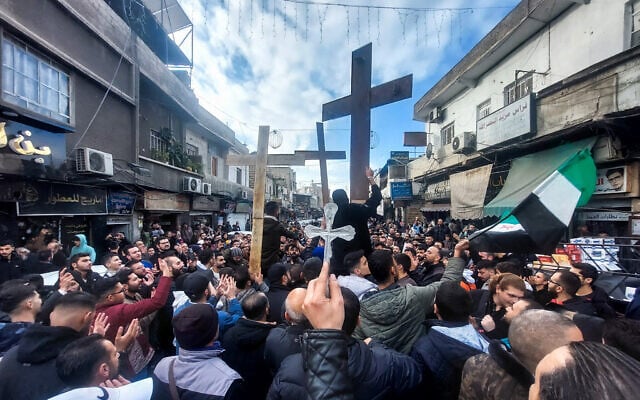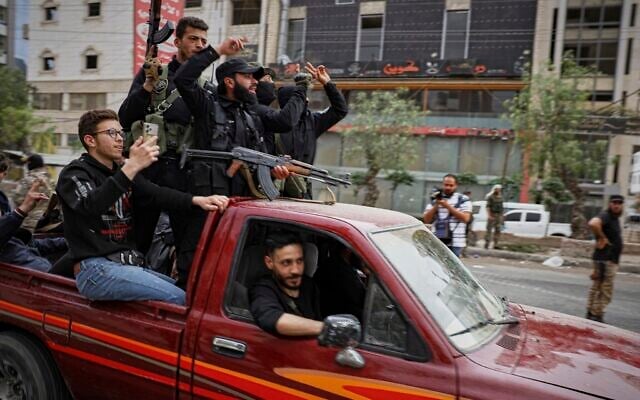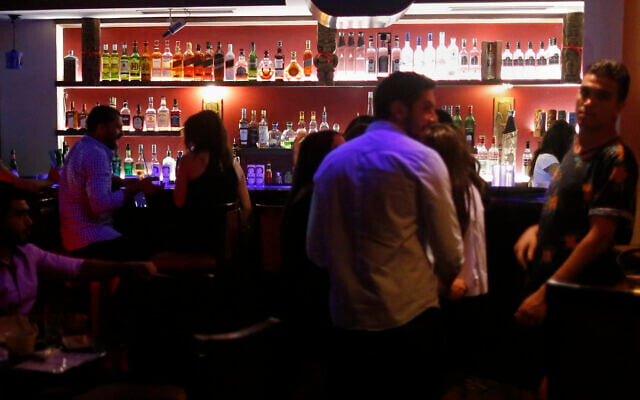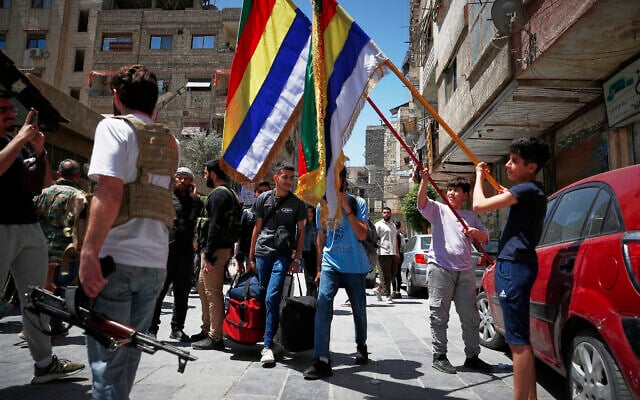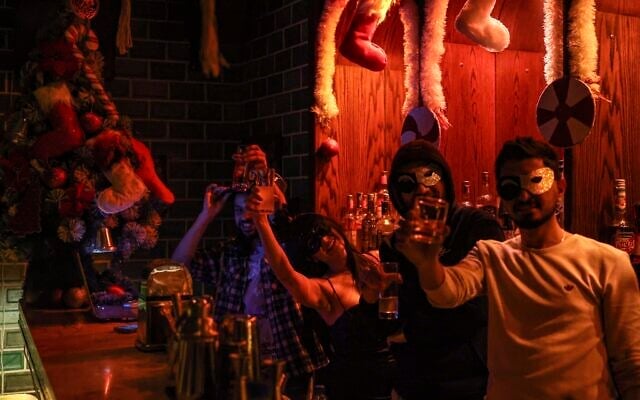


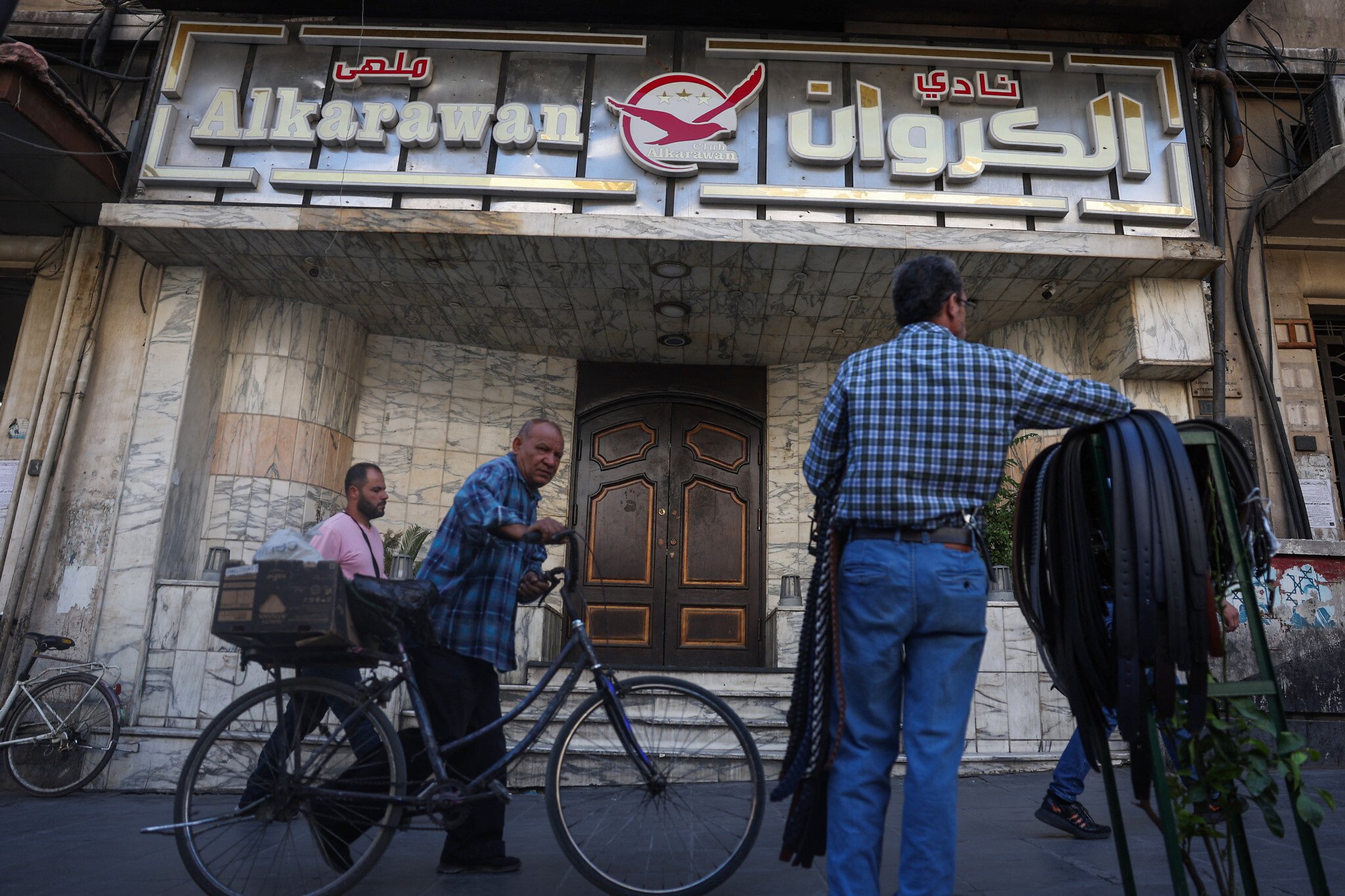
On April 29, around 20 armed men stormed into Layila al-Sharq, a popular nightclub near central Damascus. According to reports, the men began attacking patrons, sending them fleeing into the night.
In video of the incident, scores of frenzied clubgoers can be seen trying to escape the scene as the attackers shove and beat them.
Six days later, three gunmen entered the Al-Karawan nightclub, located some three blocks away, and began shooting, killing a young woman employed by the club as a dancer and wounding two others.
In both instances, the attackers were wearing clothes identifying them as members of the new Syrian regime’s security forces.
The assaults have sent a chill through the cosmopolitan capital, compounding fears that personal freedoms could shrink under the rule of the Islamists who ousted former leader Bashar al-Assad from power last year.
“People are scared,” a Syrian told The Times of Israel via WhatsApp, speaking on condition of anonymity due to security concerns. “Damascus is almost empty in the evenings now, and that’s not normal. The gunmen entered the restaurant and opened fire indiscriminately. These are restaurants that have operated for years.”
For decades — even during Syria’s 14-year civil war — restaurants, nightclubs, and bars have operated in Damascus, offering the capital’s largely secular population, including its sizable Christian community, places to drink, dance and mingle.
After Assad’s fall in early December, clubs, bars and other nightlife spots briefly shut down. Though they quickly reopened, the owners told Arab and international media they feared operating under an extremist Islamist regime.
The new Syrian leadership responded quickly to the attacks on the nightclubs. Damascus Governor Maher Marwan, who was appointed by President Ahmed al-Sharaa after the fall of the Assad regime, condemned the attacks. Marwan, who is considered close to al-Sharaa, had previously served with the rebel administration in Idlib for over a decade.
The Syrian Interior Ministry announced within days that members of the Syrian security forces had been arrested on suspicion of involvement in the attack on Layila al-Sharq.
But the gunmen behind the more serious attack on al-Karawan remain at large. Syrian police who arrived on scene following the attack were too late to catch the shooters, according to a regime TV station. No arrests have been announced.
Some Damascenes see the Islamist regime as unwilling to truly crack down on violent fundamentalists within their ranks.
“The government claims these are rogue fighters,” a resident of the capital said. “But if you’re really a government trying to build a non-Islamist state, you need to arrest people like this. The jihadists want to shut down all alcohol-serving venues and restaurants in Damascus.”
The nightclub attacks are only the latest of a series of violent attacks by regime-linked figures that have cast doubt on the new leadership’s commitment to multicultural tolerance.
Despite emerging from the al-Qaeda offshoot Hayat Tahrir al-Shams, Sharaa and his allies have attempted to portray themselves as moderates under whom women and ethnic and religious minorities will be protected.
Those proclamations were put to the test on Christmas eve just weeks after Sharaa took power, as masked men set fire to a Christmas tree in the Christian-majority city of al-Suqaylabiyah in central Syria on December 24. Other attacks on churches were also reported around the holiday.
Some Christians protested, but Christmas ceremonies mostly went ahead as planned and the events swiftly faded from the public eye.
In March, however, regime fighters from the country’s Sunni majority began slaughtering members of the country’s Alawite minority in revenge for an attempted attack on security forces by Assad loyalists. Some 1,700 people, mostly unarmed civilians, were reported killed in the ensuing massacres, with many viewing the bloodletting as a display of the new leadership’s true intentions.
A commission of inquiry ordered by Sharaa is expected to submit its findings in the coming months, but doubts remain about whether any higher-ups will be held accountable.
Sharaa referenced the massacre during a May 7 meeting with French President Emmanuel Macron, portraying it as an expected result of decades of oppression under the Alawite Assad family, which had privileged some members of the community.
“We know that the post-revolution and postwar period is difficult,” Sharaa said. “Sectarianism was used as a weapon against Syrians for 45 years… In recent months, we’ve seen a tragic example of armed men exploiting this situation.”
In recent weeks, the approximately 600,000-strong Druze community has also found itself in the crosshairs. Armed Druze and Sunni factions have clashed in recent weeks in what appears to be a religiously motivated conflict, with Druze reporting civilians being targeted and killed.
Israel, home to its own sizable Druze community, stepped in on April 30, carrying out a drone strike on what it said was a gathering of extremist fighters who had attacked Druze civilians and were preparing to kill more members of the community. Jerusalem described it as a “warning strike.”
Several wounded Druze from Syria have also been allowed into Israel for medical treatment.
These groups were forced to coexist under the dictatorship of the Assad dynasty – first Hafez al-Assad, then his son Bashar, who was overthrown in December 2024 — a dramatic change that risks reawakening old demons and threatens the safety of the entire country.
Seeking reintegration Syria into the international community and financial support to rebuild the country after years of war, Sharaa has courted closer ties with both the West and moderate Arab states, projecting internal stability and a commitment to Western values of tolerance and protection for minorities.
In February, he launched a national dialogue in which a vision for a “New Syria” was drafted. The conference emphasized liberty as a foundational societal value, alongside freedom of opinion and expression.
Women’s rights were highlighted, as well as protections for children, support for the disabled, and the development of the younger generation.
The conference also called for the elimination of all forms of discrimination based on race, religion, or belief, and for equal opportunity for all.
By Middle Eastern standards, Syria represents something of a melting pot, featuring a diverse mix of ethnic and religious communities.
According to the CIA World Factbook, only 50% of Syria’s population is ethnically Arab; the rest are groups like Druze and Kurds.
Religiously, about 74% are Sunni Muslims, with the remainder being Shiites, Christians, Alawites, and others, though nothing remains of a once-large Jewish community.
Forced into a single border by history, the groups have maintained a sometimes-uneasy stasis for the last century, much of it under the iron-fisted dictatorship of the Assad family.
Unshackled from their brutal rule, Syria is still vulnerable to new paroxysms of interethnic and interreligious fighting. Though there have not been any more attacks on nightclubs, unrest of all sorts remains a daily risk — whether due to violent regime actions against civilians or clashes among various religious and ethnic groups.
With each new attack on minorities or symbols of liberalism, skepticism will continue to mount over whether the jihadist fundamentalists newly in charge will hold the country together by keeping it true to the inclusive vision for the New Syria, or by returning to the oppressive ways of their predecessors.

